Tokyo Fashion Week Fall 2014: Part 3
Tokyo fashion week came to an end with intricate patchwork pieces, treated textiles, structured dresses and an abundance of plaid, tweed and earth tones. Check out some of the collections that will be forecasting fall’s biggest trends.
Johan Ku
London-based designer Johan Ku has received many awards for his skill at creating sculptural pieces with unique and elaborate textures. Ku’s techniques landed his collection “Emotional Sculpture” in a British knitwear textbook next to renowned designers such as Alexander McQueen and Vivienne Westwood.
Ku’s runway provided a show full of visual art and figurative nods towards the collection’s inspiration, the film “Pan’s Labyrinth.” Hand-knitted, cropped sweaters in deep emerald were paired over knee-length skirts and sweater dresses. Blazers, topcoats and trousers were made from a patchwork textile that provided structured silhouettes, which were styled cohesively with abstract printed separates such as a tea-length dress and leggings. Other textures, such as the fur front of a shift dress with leather paneled backing, were used to further enhance the garments.
Yasutoshi Ezumi
A former assistant to Alexander McQueen, designer Yasutoshi Yasumi launched his namesake brand in 2010. He conceptualizes by researching society, culture and environments, and creates collections in combining chosen elements and adding his own personal style.
Implementing trends such as plaid, tweed and color blocking, Ezumi’s fall collection showed variations of womenswear classics. Double-breasted trench coats with matching sheath dresses, full skirts and blazers were shown in large plaid prints, and Bermuda shorts with tweed inner linings were styled with moto jackets. Additionally, asymmetric hemlines, off-the-shoulder sweaters and glossy wide-legged trousers brought more character to the series.
Ariunaa Suri
Passionate about designing for unique individuals, Ariunaa Suri started her brand in 2011 with the concept of using organic fabrics, soft hues and traditional patterns from her homeland, Mongolia.
Inspired by the Mongolian steppes, Suri’s fall and winter collection featured treated leathers, thin wools and loose linens in monochromatic outfits of gray, black and beige. The “Nomadic Ethic “ theme was translated through torn hemlines, loose, tiered sleeve blazers and an oversized women’s coat with a single clip fastening. Details such as bright yellow fabric inserted into the elbows of blazers and jackets acted as surprise elements against the earthtone hues of the collection.
Yoshio Kubo
Menswear designer Yoshio Kubo started his original brand in 2005 after spending years as the assistant to haute couture designer Robert Danes in New York. Kubo designs with the intention to make people think about the meaning and details of the clothing they are wearing.
Mohawks, braids and bobbed wigs were sported during Yoshio Kubo’s show. Accompanied by a live DJ performance, a succession of reindeer motif sweatshirts, striped suiting, shorts styled over color-block leggings and varsity jackets were worn down the runway. A print bearing resemblance to blurred city lights was used on tracksuits, puffy vests, and bomber jackets. A standout piece was a zip front sweater featuring a shark’s head.
A Degree Fahrenheit
Aspiring to create clothes with a message, designer Yu Amatsu started A Degree Fahrenheit with the concept of developing collections themed around a certain temperature.
“The unstable state of a cloudy sky during the day, neither sunny nor rainy,” was the premise behind Amatsu’s fall collection. His precision extends beyond the creative process, with immaculate structured dresses in various hemlines opening the show. Wide leather belts cinched the waists of black, pale mint and ivory one pieces, such as a wide legged jumpsuit and fitted dress with attached cape. For a touch of elegance, some pieces were styled with fur hand muffs.
For recaps of the week’s previous shows, click here and here.
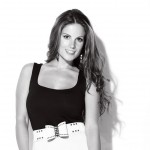
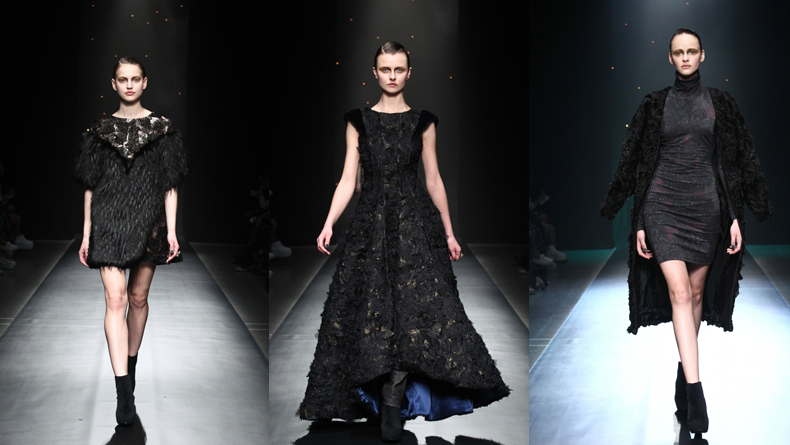
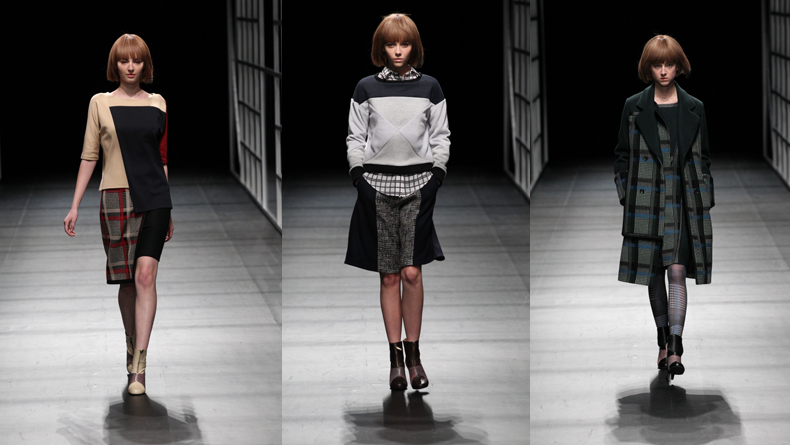
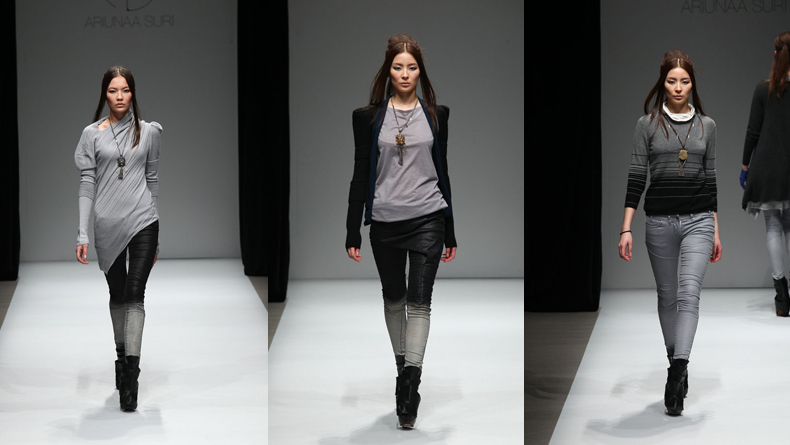
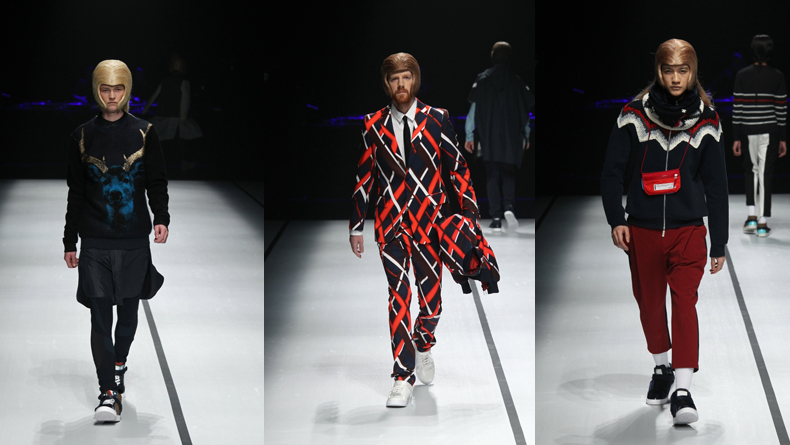
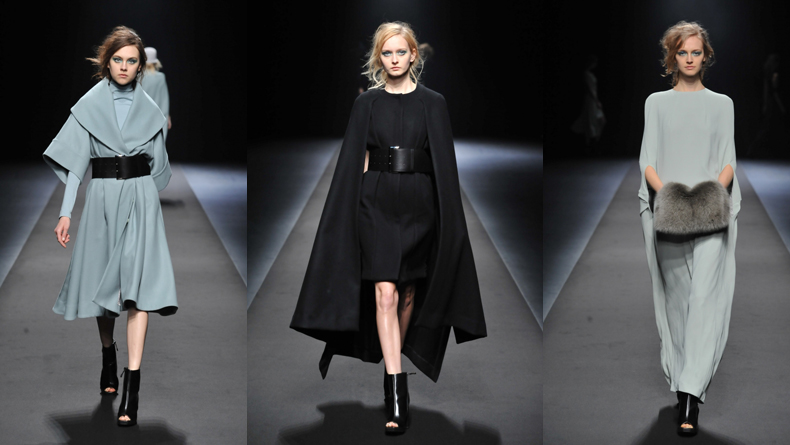



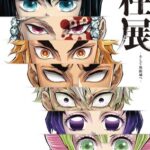







Leave a Reply